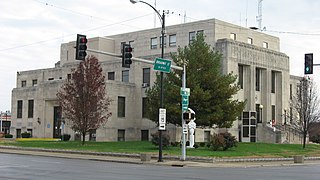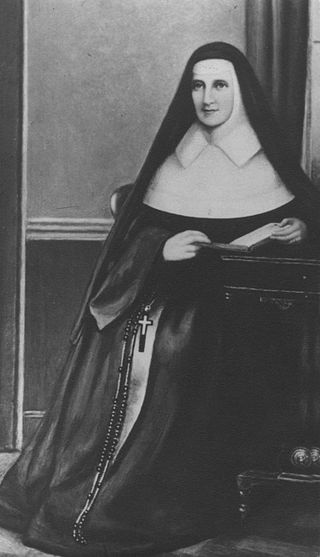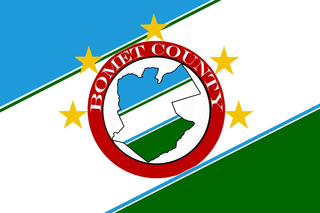This article needs additional citations for verification .(June 2020) |
Maliera Boys Secondary School is a secondary school in Kodiaga, Siaya County, Gem sub-county,Kenya. [1] Its located along Kisumu- Busia highway.
This article needs additional citations for verification .(June 2020) |
Maliera Boys Secondary School is a secondary school in Kodiaga, Siaya County, Gem sub-county,Kenya. [1] Its located along Kisumu- Busia highway.

A primary school, elementary school, or grade school is a school for primary education of children who are 4 to 10 years of age. Primary schooling follows preschool and precedes secondary schooling.

Jefferson County is a county located in the southern part of the U.S. state of Illinois. According to the 2020 census, it has a population of 37,113. The county seat is Mount Vernon. Jefferson County contains the Mount Vernon, Illinois micropolitan area. It is located in the southern portion known locally as "Little Egypt". The western border of the county adjoins the Greater St. Louis consolidated metropolitan statistical area, the Metro-East region, and the St. Louis commuter region and market and viewing area.

The Sisters of Mercy is a religious institute for women in the Roman Catholic Church. It was founded in 1831 in Dublin, Ireland, by Catherine McAuley. As of 2019, the institute has about 6200 sisters worldwide, organized into a number of independent congregations. They also started many education and health care facilities around the world.

A state school, public school, or government school is a primary or secondary school that educates all students without charge. They are funded in whole or in part by taxation and operated by the government of the state. State-funded schools are global with each country showcasing distinct structures and curricula. Government-funded education spans from primary to secondary levels, covering ages 4 to 18. Alternatives to this system include homeschooling, private schools, charter schools, and other educational options.

A comprehensive school is a secondary school for pupils aged 11–16 or 11–18, that does not select its intake on the basis of academic achievement or aptitude, in contrast to a selective school system where admission is restricted on the basis of selection criteria, usually academic performance. The term is commonly used in relation to England and Wales, where comprehensive schools were introduced as state schools on an experimental basis in the 1940s and became more widespread from 1965.
The Thames Valley District School Board is a public school board in southwestern Ontario, Canada.
Kitui is a town and capital of Kitui County in Kenya, 185 kilometres east of Nairobi and 105 kilometres east of Machakos. it covers an area approximately 30,496.4 km squares and lies between latitudes 0°10 South and 3°0 South and longitudes 37°50 East and 39°0 East. It borders seven counties i.e. Machakos and Makueni counties to the west, Tana River County to the east and south-east, Taita Taveta County to the south, Embu to the north-west, and Tharaka-Nithi and Meru counties to the north. Kitui became the headquarters of Kitui County after the adoption of the new constitution and coming into effect of devolved governments.
Lincolnshire is one of the few counties within the UK that still uses the eleven-plus to decide who may attend grammar school, in common with Buckinghamshire and Kent. As a result, many towns in Lincolnshire have both a grammar school and a secondary modern school.

Siaya County is one of the counties in the former Nyanza Province in western Kenya. It is bordered by Busia County to the north, Kakamega County, and Vihiga County to the northeast and Kisumu County to the southeast. It shares a water border with Homa Bay County which is located south of Siaya County. The total area of the county is approximately 2,496.1 km2. The county lies between latitude 0° 26' to 0° 18' north and longitude 33° 58' and 34° 33' east. Siaya has been split up into six new districts (sub-counties). Under the 2010 Constitution, the role of the districts is still unclear as much of the administrative authority was transferred to the county. The capital is Siaya, town, although the largest town is Bondo.
Simcoe County District School Board is an Ontario, Canada, English speaking public school board, serving Simcoe County. The schools and learning centres are branched throughout 4,800 square kilometres in Simcoe County. This Central Ontario setting is bordered by the Holland Marsh in the south, the Trent-Severn Waterway in the east, Grey County in the west and Muskoka in the north.

The Grand Erie District School Board is a school board that has legal jurisdiction over Norfolk County, Haldimand County, and Brant County in the province of Ontario, Canada. The main headquarters are in Brantford.

Shehong is a county-level city in the east of Sichuan province, China, located in the central part of the Sichuan Basin. It is under the administration of the prefecture-level city of Suining.

Bomet town is the capital and largest town of Bomet County, Kenya. Bomet town has a total population of 110,963. It is located along the B3 Mai Mahiu-Narok-Kisii road. Bomet city is one of the eight sister cities to Milwaukee.

Machakos County is one of the 47 counties of Kenya, which came into being as part of the devolved system of governance occasioned by the 2010 constitution of Kenya. The county's administrative headquarters are in Machakos Town, which is the largest town in the county. The county had a population of 1,421,932 as of 2019. The county borders Nairobi and Kiambu counties to the west, Embu to the north, Kitui to the east, Makueni to the south, Kajiado to the south west, and Murang'a and Kirinyaga to the north west.

Bomet County is located in the Rift Valley region of Kenya, was established in 2010 and had a population of approximately 875,689[¹], making it the 32nd largest county in Kenya by population. It is bordered by Kericho County to the west, Nakuru County to the northwest, and Narok County to the southeast. The county is characterized by its rolling hills, fertile agricultural land, and significant natural resources, including the Mau Forest and rivers such as Nyangores and Chepalungu. The predominant ethnic group is the Kalenjin, known for their rich cultural heritage and agricultural practices.
Tucker County High School is a secondary school located in Hambleton, West Virginia, with approximately 300 students. It is located at 116 Mountain Lion Way, and serves all of Tucker County. The current principal is Alex Cork.
A community school in England and Wales is a type of state-funded school in which the local education authority employs the school's staff, is responsible for the school's admissions and owns the school's estate. The formal use of this name to describe a school derives from the School Standards and Framework Act 1998.

Trøndelag County Municipality is the democratically elected regional governing administration of Trøndelag county in Norway. The main responsibilities of the county municipality includes the running of 36 upper secondary schools, with 17,000 pupils. It administers thousands of kilometers of county roadways, public transport, dental care, culture, and cultural heritage.